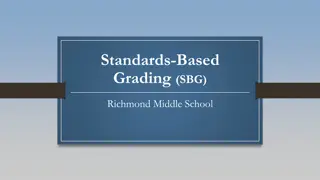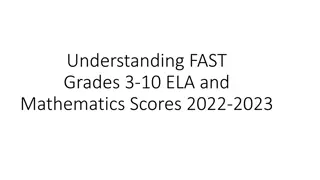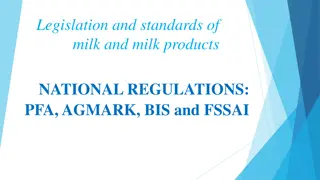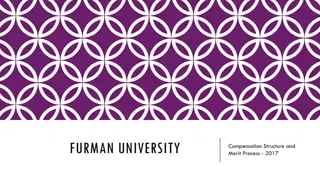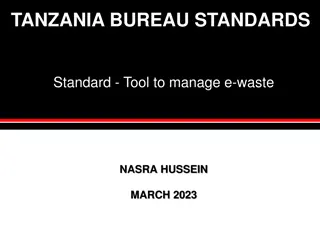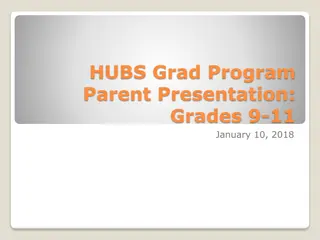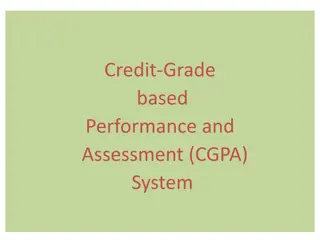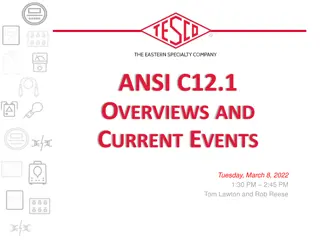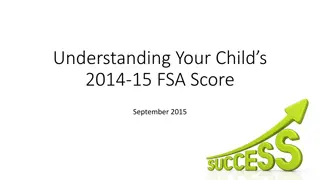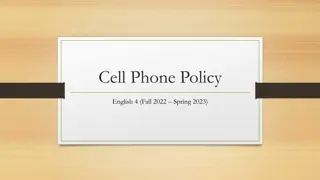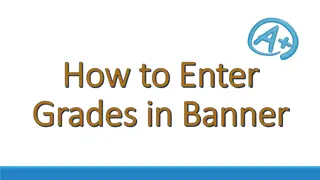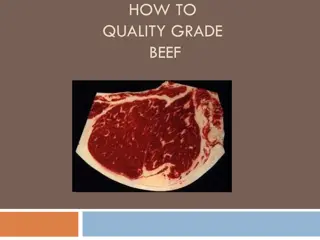World History Standards and Scope for Grades 10-12
This document outlines the standards and scope for Grade 10 World History, covering topics such as the foundations of modern world history, historical research, ethical principles in ancient philosophies, revolutions, and the Industrial Revolution. Students will analyze key events and philosophies shaping Western political thought, including the influence of ancient Greek and Roman philosophy, Judaism, and Christianity. The curriculum also delves into the Glorious Revolution, American Revolution, French Revolution, and their global impacts on political systems and individual liberties.
Download Presentation

Please find below an Image/Link to download the presentation.
The content on the website is provided AS IS for your information and personal use only. It may not be sold, licensed, or shared on other websites without obtaining consent from the author.If you encounter any issues during the download, it is possible that the publisher has removed the file from their server.
You are allowed to download the files provided on this website for personal or commercial use, subject to the condition that they are used lawfully. All files are the property of their respective owners.
The content on the website is provided AS IS for your information and personal use only. It may not be sold, licensed, or shared on other websites without obtaining consent from the author.
E N D
Presentation Transcript
Common Core State Standards EPAA HSS SCOPE & SEQUENCE GRADES 10-12
Standards Scope and Sequence, Grade 10, World History Standards Scope and Sequence, Grade 10, World History Semester 1 Semester 2 Quarter Unit Foundations Intro Revolutions Industrial Rev WW I WW2 Genocide Contemporary EAG: Gr 11-12 ELA Scope and Sequence 2
Grade 10 Grade 10 - - Semester: 1 Semester: 1 Unit 1: Introduction to Modern World History Chronological and Spatial Thinking Students relate current events to the physical and human characteristics of places and regions. Historical Research, Evidence, and Point of View Students distinguish valid arguments from fallacious arguments in historical interpretations. Students identify bias and prejudice in historical interpretations. Students evaluate major debates among historians concerning alternative interpretations of the past, including an analysis of authors' use of evidence and the distinctions between sound generalizations and misleading oversimplifications. Students construct and test hypotheses; collect, evaluate, and employ information from multiple primary and secondary sources; and apply it in oral and written presentations. Historical Interpretation Students interpret past events and issues within the context in which an event unfolded rather than solely in terms of present- day norms and values. 10.1 Students relate the moral and ethical principles in ancient Greek and Roman philosophy, in Judaism, and in Christianity to the development of Western political thought. 1. Analyze the similarities and differences in Judeo-Christian and Greco-Roman views of law, reason and faith, and duties of the individual. EAG: Gr 9-10 ELA Scope and Sequence 3
Unit 2: Foundations of Democracy and Revolutions 10.1 Students relate the moral and ethical principles in ancient Greek and Roman philosophy, in Judaism, and in Christianity to the development of Western political thought. 1. Analyze the similarities and differences in Judeo-Christian and Greco-Roman views of law, reason and faith, and duties of the individual. 2. Consider the influence of the U.S. Constitution on political systems in the contemporary world. 10.2 Students compare and contrast the Glorious Revolution of England, the American Revolution, and the French Revolution and their enduring effects worldwide on the political expectations for self-government and individual liberty. 1. Compare the major ideas of philosophers and their effects on the democratic revolutions in England, the United States, France, and Latin America (e.g., John Locke, Charles-Louis Montesquieu, Jean-Jacques Rousseau, Sim n Bol var, Thomas Jefferson, James Madison). 2. List the principles of the Magna Carta, the English Bill of Rights (1689), the American Declaration of Independence (1776), the French Declaration of the Rights of Man and the Citizen (1789), and the U.S. Bill of Rights (1791). 3. Understand the unique character of the American Revolution, its spread to other parts of the world, and its continuing significance to other nations. EAG: Gr 11-12 ELA Scope and Sequence 4
Unit 3:Industrial Revolution 10.3 Students analyze the effects of the Industrial Revolution in England, France, Germany, Japan, and the United States. 1. Analyze why England was the first country to industrialize. 2. Examine how scientific and technological changes and new forms of energy brought about massive social, economic, and cultural change (e.g., the inventions and discoveries of James Watt, Eli Whitney, Henry Bessemer, Louis Pasteur, Thomas Edison). 3. Describe the growth of population, rural to urban migration, and growth of cities associated with the Industrial Revolution. 4. Trace the evolution of work and labor, including the demise of the slave trade and the effects of immigration, mining and manufacturing, division of labor, and the union movement. 5. Understand the connections among natural resources, entrepreneurship, labor, and capital in an industrial economy. 6. Analyze the emergence of capitalism as a dominant economic pattern and the responses to it, including Utopianism, Social Democracy, Socialism, and Communism. EAG: Gr 11-12 ELA Scope and Sequence 5
Unit 4:Imperialism 10.4 Students analyze patterns of global change in the era of New Imperialism in at least two of the following regions or countries: Africa, Southeast Asia, China, India, Latin America, and the Philippines. 1. Describe the rise of industrial economies and their link to imperialism and colonial-ism (e.g., the role played by national security and strategic advantage; moral issues raised by the search for national hegemony, Social Darwinism, and the missionary impulse; material issues such as land, resources, and technology). 2. Discuss the locations of the colonial rule of such nations as England, France, Germany, Italy, Japan, the Netherlands, Russia, Spain, Portugal, and the United States. 3. Explain imperialism from the perspective of the colonizers and the colonized and the varied immediate and long-term responses by the people under colonial rule. 4. Describe the independence struggles of the colonized regions of the world, including the roles of leaders, such as Sun Yat-sen in China, and the roles of ideology and religion. EAG: Gr 11-12 ELA Scope and Sequence 6
Semester 2 Semester 2 Unit 5: World War 1 10.5 Students analyze the causes and course of the First World War. 1. Analyze the arguments for entering into war presented by leaders from all sides of the Great War and the role of political and economic rivalries, ethnic and ideological conflicts, domestic discontent and disorder, and propaganda and nationalism in mobilizing the civilian population in support of "total war." 2. Examine the principal theaters of battle, major turning points, and the importance of geographic factors in military decisions and outcomes (e.g., topography, waterways, distance, climate). 3. Explain how the Russian Revolution and the entry of the United States affected the course and outcome of the war. 4. Understand the nature of the war and its human costs (military and civilian) on all sides of the conflict, including how colonial peoples contributed to the war effort. 5. Discuss human rights violations and genocide, including the Ottoman government's actions against Armenian citizens. EAG: Gr 11-12 ELA Scope and Sequence 7
Semester 2 Semester 2 Unit 6: World War 2 10.6 Students analyze the effects of the First World War. 1. Analyze the aims and negotiating roles of world leaders, the terms and influence of the Treaty of Versailles and Woodrow Wilson's Fourteen Points, and the causes and effects of the United States's rejection of the League of Nations on world politics. 2. Describe the effects of the war and resulting peace treaties on population movement, the international economy, and shifts in the geographic and political borders of Europe and the Middle East. 3. Understand the widespread disillusionment with prewar institutions, authorities, and values that resulted in a void that was later filled by totalitarians. 10.8 Students analyze the causes and consequences of World War II. 1. Compare the German, Italian, and Japanese drives for empire in the 1930s, including the 1937 Rape of Nanking, other atrocities in China, and the Stalin-Hitler Pact of 1939. 2. Understand the role of appeasement, nonintervention (isolationism), and the domestic distractions in Europe and the United States prior to the outbreak of World War II. 3. Identify and locate the Allied and Axis powers on a map and discuss the major turning points of the war, the principal theaters of conflict, key strategic decisions, and the resulting war conferences and political resolutions, with emphasis on the importance of geographic factors. 4. Describe the political, diplomatic, and military leaders during the war (e.g., Winston Churchill, Franklin Delano Roosevelt, Emperor Hirohito, Adolf Hitler, Benito Mussolini, Joseph Stalin, Douglas MacArthur, Dwight Eisenhower). 5. Analyze the Nazi policy of pursuing racial purity, especially against the European Jews; its transformation into the Final Solution; and the Holocaust that resulted in the murder of six million Jewish civilians. 6. Discuss the human costs of the war, with particular attention to the civilian and military losses in Russia, Germany, Britain, the United States, China, and Japan. 10.9.8 Discuss the establishment and work of the United Nations and the purposes and functions of the Warsaw Pact, SEATO, NATO, and the Organization of American States. EAG: Gr 11-12 ELA Scope and Sequence 8
Semester 2 Semester 2 Unit 7: Cold War 10.3.6 Analyze the emergence of capitalism as a dominant economic pattern and the responses to it, including Utopianism, Social Democracy, Socialism, and Communism. 10.7 Students analyze the rise of totalitarian governments after World War I. 1. Understand the causes and consequences of the Russian Revolution, including Lenin's use of totalitarian means to seize and maintain control (e.g., the Gulag). 2. Trace Stalin's rise to power in the Soviet Union and the connection between economic policies, political policies, the absence of a free press, and systematic violations of human rights (e.g., the Terror Famine in Ukraine). 3. Analyze the rise, aggression, and human costs of totalitarian regimes (Fascist and Communist) in Germany, Italy, and the Soviet Union, noting especially their common and dissimilar traits. 10.9 Students analyze the international developments in the post-World World War II world. 1. Compare the economic and military power shifts caused by the war, including the Yalta Pact, the development of nuclear weapons, Soviet control over Eastern European nations, and the economic recoveries of Germany and Japan. 2. Analyze the causes of the Cold War, with the free world on one side and Soviet client states on the other, including competition for influence in such places as Egypt, the Congo, Vietnam, and Chile. 3. Understand the importance of the Truman Doctrine and the Marshall Plan, which established the pattern for America's postwar policy of supplying economic and military aid to prevent the spread of Communism and the resulting economic and political competition in arenas such as Southeast Asia (i.e., the Korean War, Vietnam War), Cuba, and Africa. 4. Analyze the Chinese Civil War, the rise of Mao Tse-tung, and the subsequent political and economic upheavals in China (e.g., the Great Leap Forward, the Cultural Revolution, and the Tiananmen Square uprising). 5. Describe the uprisings in Poland (1952), Hungary (1956), and Czechoslovakia (1968) and those countries' resurgence in the 1970s and 1980s as people in Soviet satellites sought freedom from Soviet control. 6. Analyze the reasons for the collapse of the Soviet Union, including the weakness of the command economy, burdens of military commitments, and growing resistance to Soviet rule by dissidents in satellite states and the non-Russian Soviet republics. EAG: Gr 11-12 ELA Scope and Sequence 9
Semester 2 Semester 2 Unit 8: Contemporary World 10.6 Students analyze the effects of the First World War. 1. Analyze the aims and negotiating roles of world leaders, the terms and influence of the Treaty of Versailles and Woodrow Wilson's Fourteen Points, and the causes and effects of the United States's rejection of the League of Nations on world politics. 2. Describe the effects of the war and resulting peace treaties on population movement, the international economy, and shifts in the geographic and political borders of Europe and the Middle East. 10.9.6Understand how the forces of nationalism developed in the Middle East, how the Holocaust affected world opinion regarding the need for a Jewish state, and the significance and effects of the location and establishment of Israel on world affairs. 10.10 Students analyze instances of nation-building in the contemporary world in at least two of the following regions or countries: the Middle East, Africa, Mexico and other parts of Latin America, and China. 1. Understand the challenges in the regions, including their geopolitical, cultural, military, and economic significance and the international relationships in which they are involved. 2. Describe the recent history of the regions, including political divisions and systems, key leaders, religious issues, natural features, resources, and population patterns. 3. Discuss the important trends in the regions today and whether they appear to serve the cause of individual freedom and democracy. 10.11 Students analyze the integration of countries into the world economy and the information, technological, and communications revolutions (e.g., television, satellites, computers). EAG: Gr 11-12 ELA Scope and Sequence 10
Semester 2 Semester 2 Unit 9: Genocide 10.5.5 Discuss human rights violations and genocide, including the Ottoman government's actions against Armenian citizens. 10.6.2 Describe the effects of the war and resulting peace treaties on population movement, the international economy, and shifts in the geographic and political borders of Europe and the Middle East. 10.8.5 Analyze the Nazi policy of pursuing racial purity, especially against the European Jews; its transformation into the Final Solution; and the Holocaust that resulted in the murder of six million Jewish civilians. 10.9.6Understand how the forces of nationalism developed in the Middle East, how the Holocaust affected world opinion regarding the need for a Jewish state, and the significance and effects of the location and establishment of Israel on world affairs. 10.10 Students analyze instances of nation-building in the contemporary world in at least two of the following regions or countries: the Middle East, Africa, Mexico and other parts of Latin America, and China. 1. Understand the challenges in the regions, including their geopolitical, cultural, military, and economic significance and the international relationships in which they are involved. 2. Describe the recent history of the regions, including political divisions and systems, key leaders, religious issues, natural features, resources, and population patterns. EAG: Gr 11-12 ELA Scope and Sequence 11
Standards Scope and Sequence, Grade 10 Standards Scope and Sequence, Grade 10 Quarter 1 2 3 4 Unit 1 2 3 4 5 6 7 8 Literature 1L 2L, 3L, 4L Information 1I 2I, 3I, 4I Literature 1L 2L, 6L Information 1I 2I, 6I 8I Literature 1L 5L, 7L, 9L Information 1I 5I, 7I, 9I 8I Literature 1L 2L, 5L Information 1I 2I, 5I Reading Range of Reading and Level of Text Complexity Anchor Standard 10: Read and comprehend complex literary and informational texts independently and proficiently. Narrative Narrative Argumentative Argumentative Argumentative Argumentative Informative/ Explanatory Informative/ Explanatory Writing 3 4, 5 3 4, 5, 6 1 4, 5 7, 8, 9 1 4, 5, 6 7, 8, 9 1 4, 5 7, 8, 9 1 4, 5, 6 7, 8, 9 2 4, 5 8, 9 2 4, 5, 6 8, 9 Range of Writing Standard 10: Write routinely over extended time frames (time for research, reflection, and revision) and shorter time frames (a single sitting or a day or two) for a range of tasks, purposes, and audiences. 1, 2 5 6 6 6 6 College and Career Readiness Anchor Standards for Speaking and Listening The standards on the following pages define what students should understand and be able to do by the end of each grade. They correspond to the College and Career Readiness (CCR) anchor standards below by number. The CCR and grade-specific standards are necessary complements the former providing broad standards, the latter providing additionalspecificity that together define the skills and understandings that all students must demonstrate. 1, 2 4 1, 2 5 1, 2 4 1, 2 5 6 1, 2 4 6 1, 2 3, 5 6 1, 2 3, 4 6 Language Note on range and content of student speaking and listening To build a foundation for college and career readiness, students must have ample opportunities to take part in a variety of rich, structured conversations as part of a whole class, in small groups, and with a partner. Being productive members of these conversations requires that students contribute accurate, relevant information; respond to and develop what others have said; make comparisons and contrasts; and analyze and synthesize a multitude of ideas in various domains. The standards should be incorporated across all units. EAG: Gr 11-12 ELA Scope and Sequence 12
Grade 10 Grade 10 - - Quarter: 1 Quarter: 1 Unit 1 Reading: Literature 9-10.RL.1: Cite strong and thorough textual evidence to support analysis of what the text says explicitly as well as inferences drawn from the text. 9-10.RL.2: Determine a theme or central idea of a text and analyze in detail its development over the course of the text, including how it emerges and is shaped and refined by specific details; provide an objective summary of the text 9-10.RL.3: Analyze how complex characters (e.g., those with multiple or conflicting motivations) develop over the course of a text, interact with other characters, and advance the plot or develop the theme. 9-10.RL.4: Determine the meaning of words and phrases as they are used in the text, including figurative and connotative meanings; analyze the cumulative impact of specific word choices on meaning and tone (e.g., how the language evokes a sense of time and place; how it sets a formal or informal tone). Writing: Narrative 9-10.W.3: Write narratives to develop real or imagined experiences or events using effective technique, well-chosen details, and well-structured event sequences. 9-10.W.4: Produce clear and coherent writing in which the development, organization, and style are appropriate to task, purpose, and audience. (Grade- specific expectations for writing types are defined in standards 1 3 above.) 9-10.W.5: Develop and strengthen writing as needed by planning, revising, editing, rewriting, or trying a new approach, focusing on addressing what is most significant for a specific purpose and audience. Language 9-10.L.1: Demonstrate command of the conventions of standard English grammar and usage when writing or speaking 9-10.L.2: Demonstrate command of the conventions of standard English capitalization, punctuation, and spelling when writing. 9-10.L.5: Demonstrate understanding of figurative language, word relationships, and nuances in word meanings. 9-10.L.6: Acquire and use accurately grade-appropriate general academic and domain-specific words and phrases; gather vocabulary knowledge when considering a word or phrase important to comprehension or expression. EAG: Gr 9-10 ELA Scope and Sequence 13
Grade 10 Grade 10 Industrial Revolution Industrial Revolution Unit 2 Reading: Literature 9-10.RI.1: Cite strong and thorough textual evidence to support analysis of what the text says explicitly as well as inferences drawn from the text. 9-10.RI.2: Determine a central idea of a text and analyze its development over the course of the text, including how it emerges and is shaped and refined by specific details; provide an objective summary of the text. 9-10.RI.3: Analyze how the author unfolds an analysis or series of ideas or events, including the order in which the points are made, how they are introduced and developed, and the connections that are drawn between them. 9-10.RI.4: Determine the meaning of words and phrases as they are used in a text, including figurative, connotative, and technical meanings; analyze the cumulative impact of specific word choices on meaning and tone (e.g., how the language of a court opinion differs from that of a newspaper). Writing: Narrative 9-10.W.3: Write narratives to develop real or imagined experiences or events using effective technique, well-chosen details, and well-structured event sequences. 9-10.W.4: Produce clear and coherent writing in which the development, organization, and style are appropriate to task, purpose, and audience. (Grade- specific expectations for writing types are defined in standards 1 3 above.) 9-10.W.5: Develop and strengthen writing as needed by planning, revising, editing, rewriting, or trying a new approach, focusing on addressing what is most significant for a specific purpose and audience. 9-10.W.6: Use technology, including the Internet, to produce, publish, and update individual or shared writing products, taking advantage of technology s capacity to link to other information and to display information flexibly and dynamically. Language 9-10.L.1: Demonstrate command of the conventions of standard English grammar and usage when writing or speaking 9-10.L.2: Demonstrate command of the conventions of standard English capitalization, punctuation, and spelling when writing. 9-10.L.4: Determine or clarify the meaning of unknown and multiple-meaning words and phrases based on grades 9 10 reading and content, choosing flexibly from a range of strategies 9-10.L.6: Acquire and use accurately grade-appropriate general academic and domain-specific words and phrases; gather vocabulary knowledge when considering a word or phrase important to comprehension or expression. EAG: Gr 9-10 ELA Scope and Sequence 14
Grade 10 Grade 10 - - Quarter: 2 Quarter: 2 Unit 3 Reading: Literature 9-10.RL.1: Cite strong and thorough textual evidence to support analysis of what the text says explicitly as well as inferences drawn from the text.. 9-10.RL.2: Determine a theme or central idea of a text and analyze in detail its development over the course of the text, including how it emerges and is shaped and refined by specific details; provide an objective summary of the text 9-10.RL.6: Analyze a particular point of view or cultural experience reflected in a work of literature from outside the United States, drawing on a wide reading of world literature. Writing: Argumentative 9-10.W.1: Write arguments to support claims in an analysis of substantive topics or texts, using valid reasoning and relevant and sufficient evidence. 9-10.W.4: Produce clear and coherent writing in which the development, organization, and style are appropriate to task, purpose, and audience. (Grade- specific expectations for writing types are defined in standards 1 3 above.) 9-10.W.5: Develop and strengthen writing as needed by planning, revising, editing, rewriting, or trying a new approach, focusing on addressing what is most significant for a specific purpose and audience. 9-10.W.7: Conduct short as well as more sustained research projects to answer a question (including a self-generated question) or solve a problem; narrow or broaden the inquiry when appropriate; synthesize multiple sources on the subject, demonstrating understanding of the subject under investigation. 9-10.W.8: Gather relevant information from multiple authoritative print and digital sources, using advanced searches effectively; assess the usefulness of each source in answering the research question; integrate information into the text selectively to maintain the flow of ideas, avoiding plagiarism and following a standard format for citation. 9-10.W.9: Draw evidence from literary or informational texts to support analysis, reflection, and research. Language 9-10.L.1: Demonstrate command of the conventions of standard English grammar and usage when writing or speaking 9-10.L.2: Demonstrate command of the conventions of standard English capitalization, punctuation, and spelling when writing. 9-10.L.5: Demonstrate understanding of figurative language, word relationships, and nuances in word meanings. 9-10.L.6: Acquire and use accurately grade-appropriate general academic and domain-specific words and phrases; gather vocabulary knowledge when considering a word or phrase important to comprehension or expression. EAG: Gr 9-10 ELA Scope and Sequence 15
Grade 10 Grade 10 - - Quarter: 2 Quarter: 2 Unit 4 Reading: Informational Text 9-10.RI.1: Cite strong and thorough textual evidence to support analysis of what the text says explicitly as well as inferences drawn from the text. 9-10.RI.2: Determine a central idea of a text and analyze its development over the course of the text, including how it emerges and is shaped and refined by specific details; provide an objective summary of the text. 9-10.RI.6: Determine an author s point of view or purpose in a text and analyze how an author uses rhetoric to advance that point of view or purpose. 9-10.RI.8: Delineate and evaluate the argument and specific claims in a text, assessing whether the reasoning is valid and the evidence is relevant and sufficient; identify false statements and fallacious reasoning. Writing: Argumentative 9-10.W.1: Write arguments to support claims in an analysis of substantive topics or texts, using valid reasoning and relevant and sufficient evidence. 9-10.W.4: Produce clear and coherent writing in which the development, organization, and style are appropriate to task, purpose, and audience. (Grade- specific expectations for writing types are defined in standards 1 3 above.) 9-10.W.5: Develop and strengthen writing as needed by planning, revising, editing, rewriting, or trying a new approach, focusing on addressing what is most significant for a specific purpose and audience. 9-10.W.6: Use technology, including the Internet, to produce, publish, and update individual or shared writing products, taking advantage of technology s capacity to link to other information and to display information flexibly and dynamically. 9-10.W. 7: Conduct short as well as more sustained research projects to answer a question (including a self-generated question) or solve a problem; narrow or broaden the inquiry when appropriate; synthesize multiple sources on the subject, demonstrating understanding of the subject under investigation. 9-10.W.8: Gather relevant information from multiple authoritative print and digital sources, using advanced searches effectively; assess the usefulness of each source in answering the research question; integrate information into the text selectively to maintain the flow of ideas, avoiding plagiarism and following a standard format for citation. 9-10.W.9: Draw evidence from literary or informational texts to support analysis, reflection, and research. Language 9-10.L.1: Demonstrate command of the conventions of standard English grammar and usage when writing or speaking 9-10.L.2: Demonstrate command of the conventions of standard English capitalization, punctuation, and spelling when writing. 9-10.L.4: Determine or clarify the meaning of unknown and multiple-meaning words and phrases based on grades 9 10 reading and content, choosing flexibly from a range of strategies 9-10.L.6: Acquire and use accurately grade-appropriate general academic and domain-specific words and phrases; gather vocabulary knowledge when considering a word or phrase important to comprehension or expression. EAG: Gr 9-10 ELA Scope and Sequence 16
Grade 10 Grade 10 - - Quarter: 3 Quarter: 3 Unit 5 Reading: Literature 9-10.RL.1: Cite strong and thorough textual evidence to support analysis of what the text says explicitly as well as inferences drawn from the text.. 9-10.RL.5: Analyze how an author s choices concerning how to structure a text, order events within it (e.g., parallel plots), and manipulate time (e.g., pacing, flashbacks) create such effects as mystery, tension, or surprise. 9-10.RL.7: Analyze the representation of a subject or a key scene in two different artistic mediums, including what is emphasized or absent in each treatment (e.g., Auden s Mus e des Beaux Arts and Breughel s Landscape with the Fall of Icarus). 9-10.RL.9: Analyze how an author draws on and transforms source material in a specific work (e.g., how Shakespeare treats a theme or topic from Ovid or the Bible or how a later author draws on a play by Shakespeare). Writing: Argumentative 9-10.W.1: Write arguments to support claims in an analysis of substantive topics or texts, using valid reasoning and relevant and sufficient evidence. 9-10.W.4: Produce clear and coherent writing in which the development, organization, and style are appropriate to task, purpose, and audience. (Grade- specific expectations for writing types are defined in standards 1 3 above.) 9-10.W.5: Develop and strengthen writing as needed by planning, revising, editing, rewriting, or trying a new approach, focusing on addressing what is most significant for a specific purpose and audience. 9-10.W. 7: Conduct short as well as more sustained research projects to answer a question (including a self-generated question) or solve a problem; narrow or broaden the inquiry when appropriate; synthesize multiple sources on the subject, demonstrating understanding of the subject under investigation. 9-10.W.8: Gather relevant information from multiple authoritative print and digital sources, using advanced searches effectively; assess the usefulness of each source in answering the research question; integrate information into the text selectively to maintain the flow of ideas, avoiding plagiarism and following a standard format for citation. 9-10.W.9: Draw evidence from literary or informational texts to support analysis, reflection, and research. Language 9-10.L.1: Demonstrate command of the conventions of standard English grammar and usage when writing or speaking 9-10.L.2: Demonstrate command of the conventions of standard English capitalization, punctuation, and spelling when writing. 9-10.L.5: Demonstrate understanding of figurative language, word relationships, and nuances in word meanings. 9-10.L.6: Acquire and use accurately grade-appropriate general academic and domain-specific words and phrases; gather vocabulary knowledge when considering a word or phrase important to comprehension or expression. EAG: Gr 9-10 ELA Scope and Sequence 17
Grade 10 Grade 10 - - Quarter: 3 Quarter: 3 Unit 6 Reading: Informational Text 9-10.RI.1: Cite strong and thorough textual evidence to support analysis of what the text says explicitly as well as inferences drawn from the text. 9-10.RI.5: Analyze in detail how an author s ideas or claims are developed and refined by particular sentences, paragraphs, or larger portions of a text (e.g., a section or chapter). 9-10.RI.7: Analyze various accounts of a subject told in different mediums (e.g., a person s life story in both print and multimedia), determining which details are emphasized in each account. 9-10.RI.8: Delineate and evaluate the argument and specific claims in a text, assessing whether the reasoning is valid and the evidence is relevant and sufficient; identify false statements and fallacious reasoning. 9-10.RI.9: Analyze seminal U.S. documents of historical and literary significance (e.g., Washington s Farewell Address, the Gettysburg Address, Roosevelt s Four Freedoms speech, King s Letter from Birmingham Jail ), including how they address related themes and concepts. Writing: Argumentative 9-10.W.1: Write arguments to support claims in an analysis of substantive topics or texts, using valid reasoning and relevant and sufficient evidence. 9-10.W.4: Produce clear and coherent writing in which the development, organization, and style are appropriate to task, purpose, and audience. (Grade- specific expectations for writing types are defined in standards 1 3 above.) 9-10.W.5: Develop and strengthen writing as needed by planning, revising, editing, rewriting, or trying a new approach, focusing on addressing what is most significant for a specific purpose and audience. 9-10.W.6: Use technology, including the Internet, to produce, publish, and update individual or shared writing products, taking advantage of technology s capacity to link to other information and to display information flexibly and dynamically. 9-10.W. 7: Conduct short as well as more sustained research projects to answer a question (including a self-generated question) or solve a problem; narrow or broaden the inquiry when appropriate; synthesize multiple sources on the subject, demonstrating understanding of the subject under investigation. 9-10.W.8: Gather relevant information from multiple authoritative print and digital sources, using advanced searches effectively; assess the usefulness of each source in answering the research question; integrate information into the text selectively to maintain the flow of ideas, avoiding plagiarism and following a standard format for citation. 9-10.W.9: Draw evidence from literary or informational texts to support analysis, reflection, and research. Language 9-10.L.1: Demonstrate command of the conventions of standard English grammar and usage when writing or speaking 9-10.L.2: Demonstrate command of the conventions of standard English capitalization, punctuation, and spelling when writing. 9-10.L.4: Determine or clarify the meaning of unknown and multiple-meaning words and phrases based on grades 9 10 reading and content, choosing flexibly from a range of strategies 9-10.L.6: Acquire and use accurately grade-appropriate general academic and domain-specific words and phrases; gather vocabulary knowledge when considering a word or phrase important to comprehension or expression. EAG: Gr 9-10 ELA Scope and Sequence 18
Grade 10 Grade 10 - - Quarter: 4 Quarter: 4 Unit 7 Reading: Literature 9-10.RL.1: Cite strong and thorough textual evidence to support analysis of what the text says explicitly as well as inferences drawn from the text.. 9-10.RL.2: Determine a theme or central idea of a text and analyze in detail its development over the course of the text, including how it emerges and is shaped and refined by specific details; provide an objective summary of the text 9-10.RL.5: Analyze how an author s choices concerning how to structure a text, order events within it (e.g., parallel plots), and manipulate time (e.g., pacing, flashbacks) create such effects as mystery, tension, or surprise. Writing: Information/Explanatory 9-10.W.2: Write informative/explanatory texts to examine and convey complex ideas, concepts, and information clearly and accurately through the effective selection, organization, and analysis of content. 9-10.W.4: Produce clear and coherent writing in which the development, organization, and style are appropriate to task, purpose, and audience. (Grade- specific expectations for writing types are defined in standards 1 3 above.) 9-10.W.5: Develop and strengthen writing as needed by planning, revising, editing, rewriting, or trying a new approach, focusing on addressing what is most significant for a specific purpose and audience. 9-10.W.8: Gather relevant information from multiple authoritative print and digital sources, using advanced searches effectively; assess the usefulness of each source in answering the research question; integrate information into the text selectively to maintain the flow of ideas, avoiding plagiarism and following a standard format for citation. 9-10.W.9: Draw evidence from literary or informational texts to support analysis, reflection, and research. Language 9-10.L.1: Demonstrate command of the conventions of standard English grammar and usage when writing or speaking 9-10.L.2: Demonstrate command of the conventions of standard English capitalization, punctuation, and spelling when writing. 9-10.L.3: Apply knowledge of language to understand how language functions in different contexts, to make effective choices for meaning or style, and to comprehend more fully when reading or listening. 9-10.L.5: Demonstrate understanding of figurative language, word relationships, and nuances in word meanings. 9-10.L.6: Acquire and use accurately grade-appropriate general academic and domain-specific words and phrases; gather vocabulary knowledge when considering a word or phrase important to comprehension or expression. EAG: Gr 9-10 ELA Scope and Sequence 19
Grade 10 Grade 10 - - Quarter: 4 Quarter: 4 Unit 8 Reading: Informational Text 9-10.RI.1: Cite strong and thorough textual evidence to support analysis of what the text says explicitly as well as inferences drawn from the text. 9-10.RI.2: Determine a central idea of a text and analyze its development over the course of the text, including how it emerges and is shaped and refined by specific details; provide an objective summary of the text. 9-10.RI.5: Analyze in detail how an author s ideas or claims are developed and refined by particular sentences, paragraphs, or larger portions of a text (e.g., a section or chapter). Writing: Information/Explanatory 9-10.W.2: Write informative/explanatory texts to examine and convey complex ideas, concepts, and information clearly and accurately through the effective selection, organization, and analysis of content. 9-10.W.4: Produce clear and coherent writing in which the development, organization, and style are appropriate to task, purpose, and audience. (Grade- specific expectations for writing types are defined in standards 1 3 above.) 9-10.W.5: Develop and strengthen writing as needed by planning, revising, editing, rewriting, or trying a new approach, focusing on addressing what is most significant for a specific purpose and audience. 9-10.W.6: Use technology, including the Internet, to produce, publish, and update individual or shared writing products, taking advantage of technology s capacity to link to other information and to display information flexibly and dynamically. 9-10.W.8: Gather relevant information from multiple authoritative print and digital sources, using advanced searches effectively; assess the usefulness of each source in answering the research question; integrate information into the text selectively to maintain the flow of ideas, avoiding plagiarism and following a standard format for citation. 9-10.W.9: Draw evidence from literary or informational texts to support analysis, reflection, and research. Language 9-10.L.1: Demonstrate command of the conventions of standard English grammar and usage when writing or speaking 9-10.L.2: Demonstrate command of the conventions of standard English capitalization, punctuation, and spelling when writing. 9-10.L.3: Apply knowledge of language to understand how language functions in different contexts, to make effective choices for meaning or style, and to comprehend more fully when reading or listening. 9-10.L.4: Determine or clarify the meaning of unknown and multiple-meaning words and phrases based on grades 9 10 reading and content, choosing flexibly from a range of strategies 9-10.L.6: Acquire and use accurately grade-appropriate general academic and domain-specific words and phrases; gather vocabulary knowledge when considering a word or phrase important to comprehension or expression. EAG: Gr 9-10 ELA Scope and Sequence 20






